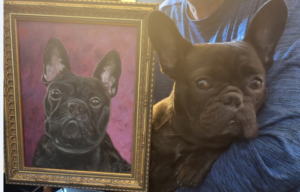The Invisible Value of Contemporary Art: A New Frontier for Investors
Art has long been more than just a visual delight; it embodies culture, emotion, and often, investment potential. But what if that art exists only as a concept? Italian artist Salvatore Garau has challenged our perceptions by selling an "invisible sculpture" titled Io Sono ("I Am") for an astounding $18,300. Garau insists that while the artwork is unseen, it occupies a designated space and requires specific conditions for its “existence.” This novel approach to art raises intriguing questions about value, perception, and the evolving landscape of the art market.
The Conceptual Shift in Value
Garau’s work highlights a critical point: art’s value is increasingly based on perception rather than physical presence. The media frenzy surrounding Io Sono has turned this invisible sculpture into a must-have conversation piece, showcasing how effective marketing can inflate perceived value. At Extreme Investor Network, we understand that the worth of such conceptual art can rise dramatically in a climate of hype and public interest, much like stocks influenced by market sentiment.
The Art Market: A Lucrative Yet Unregulated Arena
Unlike traditional markets like real estate or stocks, the fine art market operates in a realm of limited regulation and confidentiality. This lack of standardization makes it a preferred method for laundering money, a concern in today’s interconnected financial landscape. Fine art frequently changes hands without disclosure, allowing the affluent to protect their wealth discreetly. With art, ownership can shift across borders with minimal oversight, making it a valuable asset for individuals with disposable wealth.
The Role of High-Profile Sales
Take the controversial case of Hunter Biden, whose artwork has been appraised at up to $500,000, with anonymous buyers tied to political connections. This situation not only emphasizes the subjective nature of art valuation but also hints at a murky intersection of politics and investment. As art becomes a medium for financial maneuvering, its landscape becomes increasingly complex.
Art as a Store of Value: The Fine Line Between Asset and Speculation
Art does not generate income or provide tangible utility, which sets it apart from traditional investment vehicles. The value lies solely in societal perception, making it a speculative asset susceptible to fluctuations based on confidence. Historical examples, such as the late 1980s Japanese art bubble and the 2007-2008 financial downturn, serve as cautionary tales for contemporary investors.
Current Trends and Potential Bubbles
In light of looming sovereign debt crises worldwide, we at Extreme Investor Network advise investors to tread carefully. As the art market becomes a refuge for wealth in turbulent times, it remains crucial to differentiate between securely held masterpieces and speculative pieces that may lack long-term value. While certain rare works can act as temporary stores of wealth, many do not possess enduring appeal.
The Future of Art Investment: Taxation and Regulation
Governments are increasingly scrutinizing wealth management strategies, and there is potential for art to attract tax implications that could transform its status as a secure asset. What happens if capital gains taxes extend to art transactions? The allure of secrecy and mystery that once surrounded the art market may dissipate overnight, forcing investors to reconsider their strategies.
Final Thoughts
As art continues to redefine value in the 21st century, it presents both exciting opportunities and perilous pitfalls for investors. The evolution of art—especially conceptual pieces—challenges traditional notions of wealth and worth. At Extreme Investor Network, we’re committed to guiding you through these complexities, helping you navigate the intersection of art and investment with informed insights.
Art may be a canvas—or in some cases, an idea—but its impact on capital and conversation is as real as the wealth it can represent. Stay informed, keep learning, and approach your art investments with the discernment they deserve.

